Vintage EPA photos reveal what New York City looked like before the US regulated pollution
Without strict EPA regulation, New York City's past could become its future.

In 2010, the EPA estimated that the Clean Air Act prevented over 160,000 early deaths, 130,000 heart attacks, and millions of cases of respiratory illness.
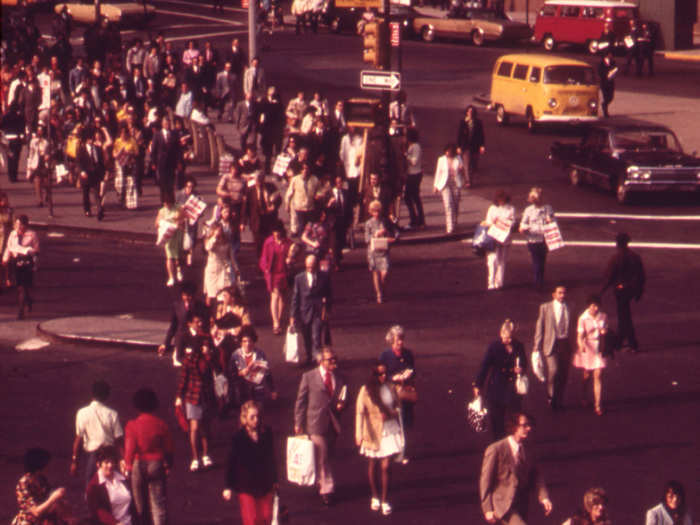
Source: EPA
Rusty oil cans piled up near a home in a Jamaica Bay neighborhood. Today, the EPA sets standards on waste produced by oil and gas industries, with the goal of limiting public health hazards.
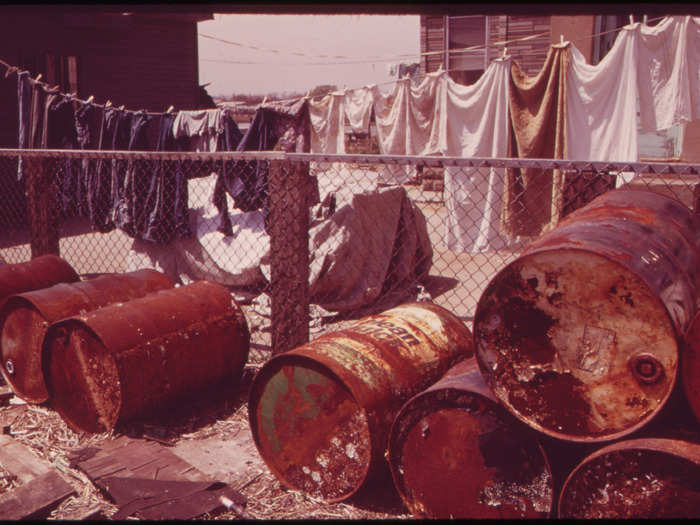
Source: EPA
Building construction has long contributed to air pollution in NYC, though the EPA now regulates emissions from construction equipment. This 1973 photo shows waste from a construction site on Manhattan's lower west side:
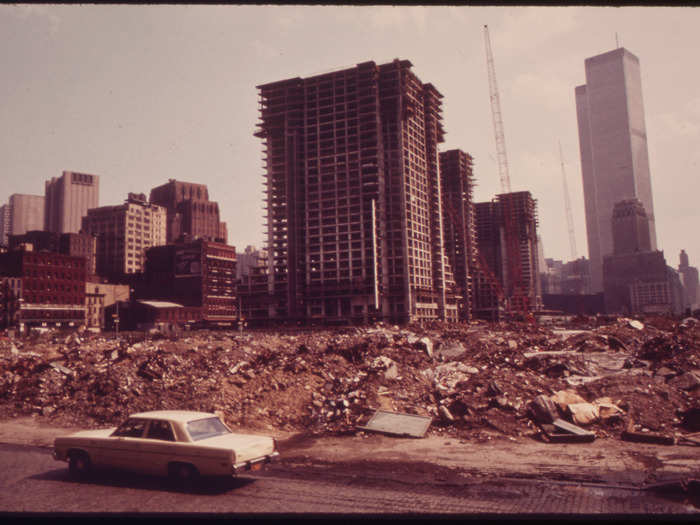
Source: The City of New York
The city didn't stop discarding sewage into the ocean until 1992, due to an EPA mandate.
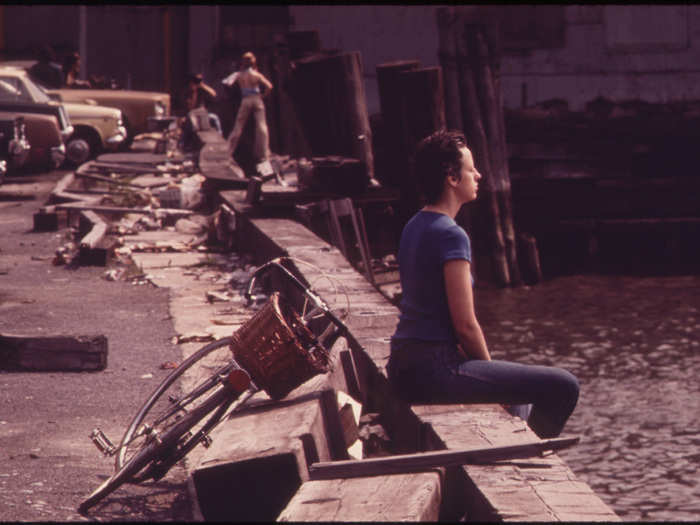
Garbage was dumped in the marshes of Spring Creek on Jamaica Bay, as seen in the 1973 image below.
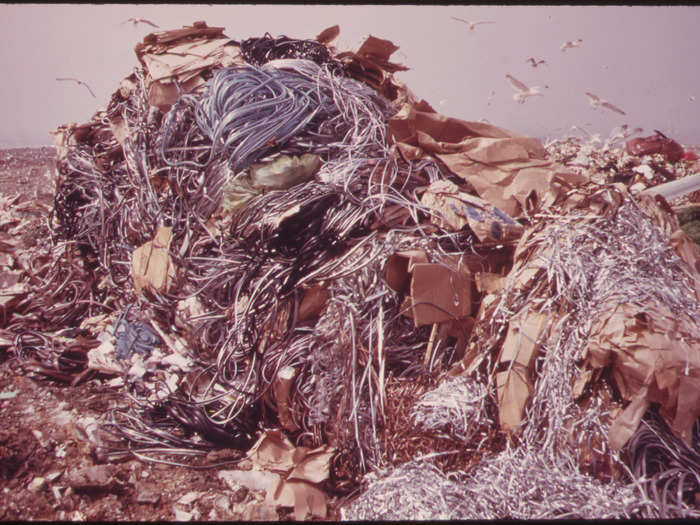
Source: The New York Times
In Brooklyn, a Gravesend Bay landfill and incineration plant served as a playground for the boys pictured below. Another landfill in Staten Island, called Fresh Kills, was the largest in the world. By 2036, it will be reclaimed as a park.
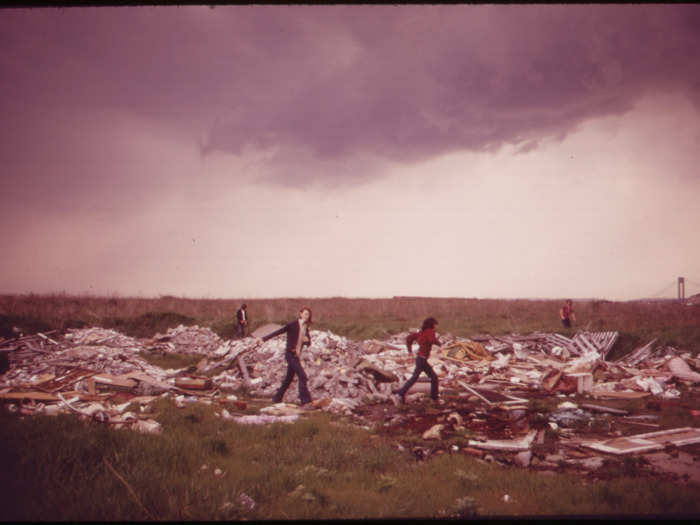
The Gravesend Bay landfill still exists today. In 2013, The New York Daily News reported that a New York City Sanitation Department study found high concentrations of two toxins banned by the EPA.
Source: Curbed
You can see the Twin Towers behind the trash pile in this 1973 photo of an illegal dumping area off the New Jersey turnpike.
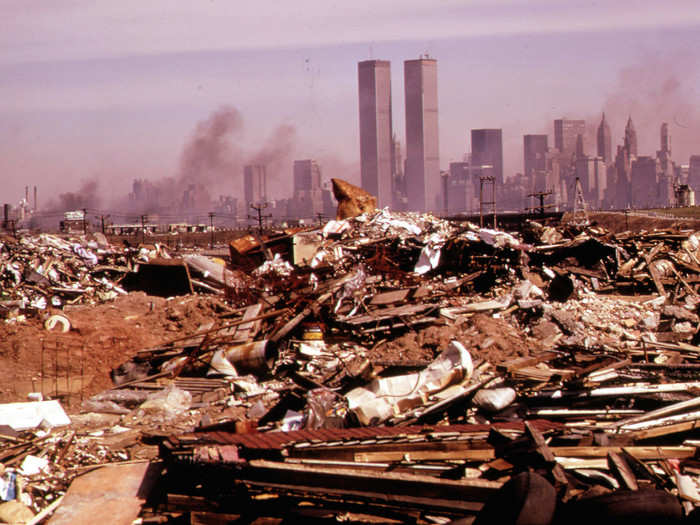
Over the years, the EPA has spearheaded mass trash removals that focus on toxic chemicals. According to the agency, some New York City residents worried about pollution and ecological damage from the Jamaica Bay landfill in the early 1970s.
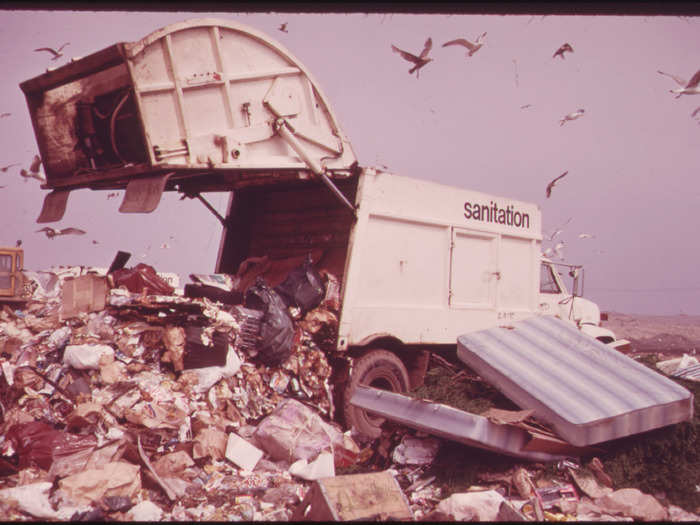
Source: The US National Archives
The 1973 photo below shows broken glass on the same beach.
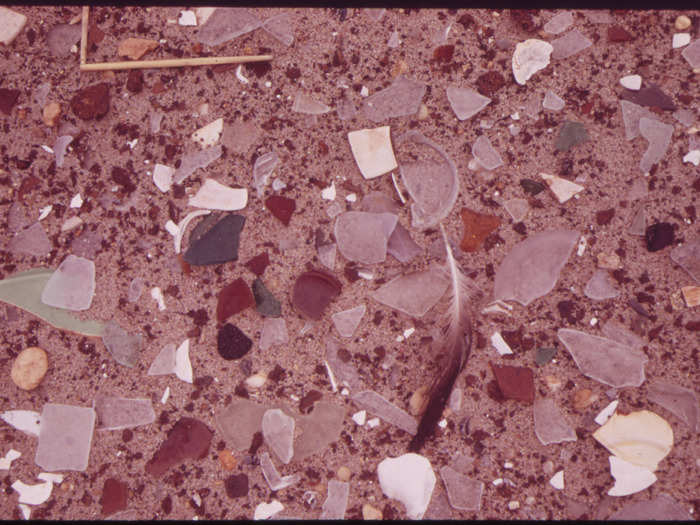
... and another was buried in sand on the Breezy Point Beach. Today, the EPA regulates landfills and auto salvage yards, but illegal disposal still happens.
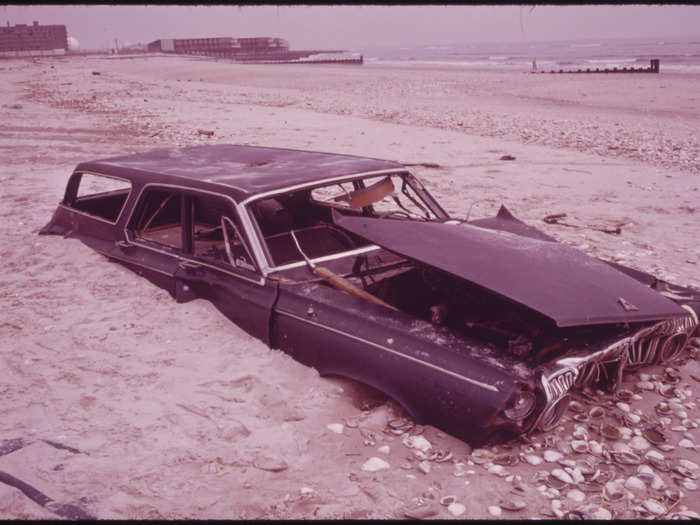
In 1973, an abandoned car sat in Jamaica Bay ...
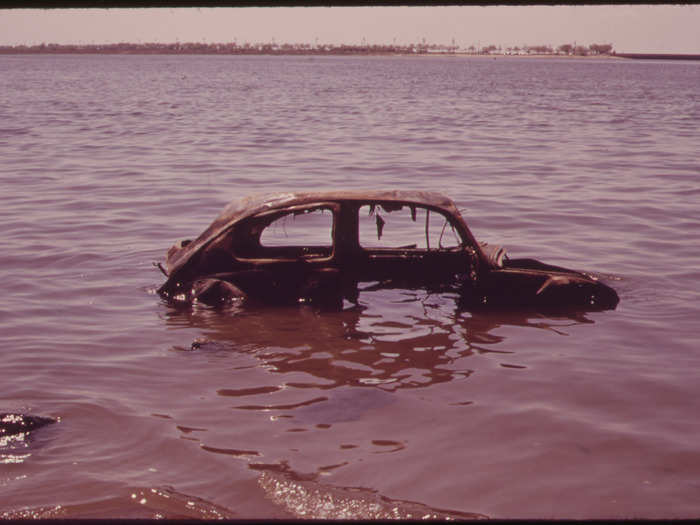
EPA's national Clean Air Act, which controls industrial pollution, was passed in 1970.
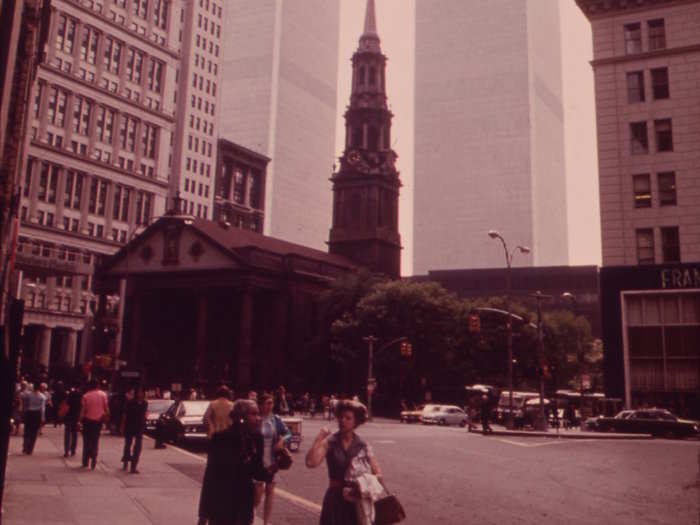
A historic smog event in 1966 — when a mass of warm air trapped pollutants from vehicles, factories, and chimneys — prompted New York City to update its local air quality laws in the late 1960s.
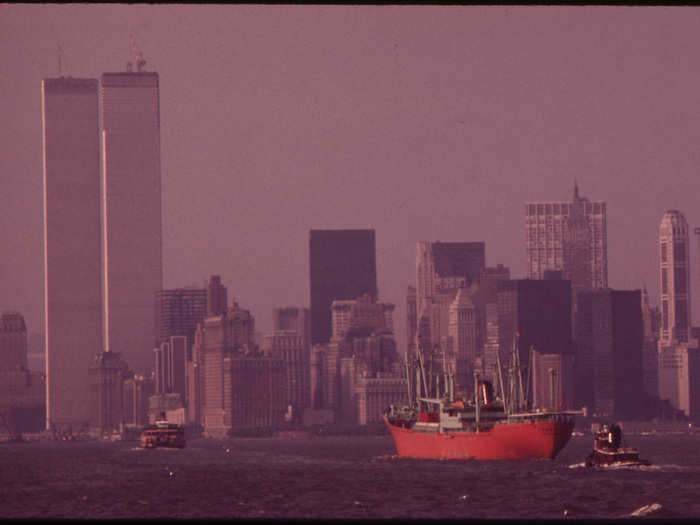
Source: The New York Times
Air pollution was also a huge issue in the city. As seen in this 1973 photo, smog obscures the George Washington Bridge.
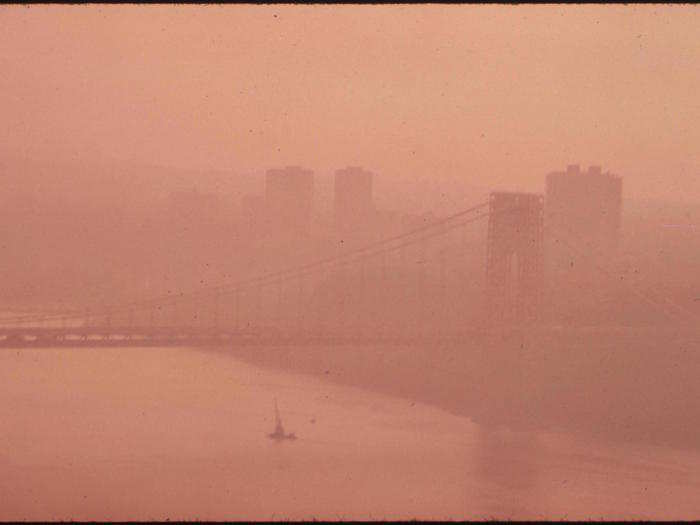
In the first six months of 1973, more than 300 oil spills occurred in the New York City area. An oil slick creeps up on the Statue of Liberty in this 1973 photo.
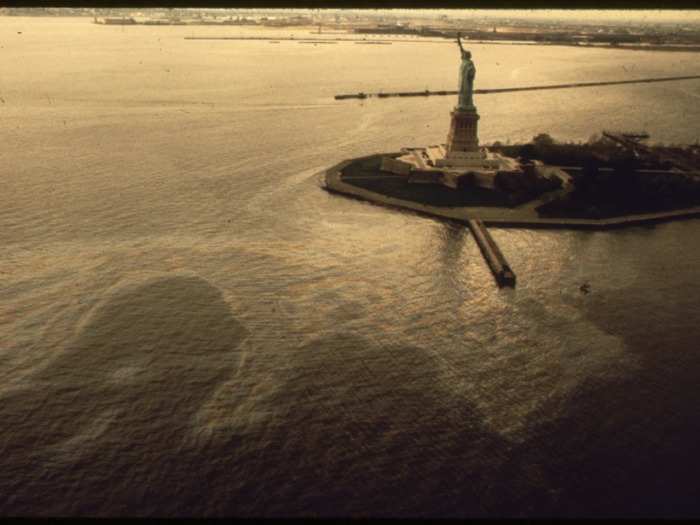
More than 800 oil spills happened in the mid-Atlantic region during the same time period, according to a 1973 Coast Guard survey.
Source: The New York Times
Many Documerica photos show scenes of general life in New York City in the 1970s, but several also document environmental issues.
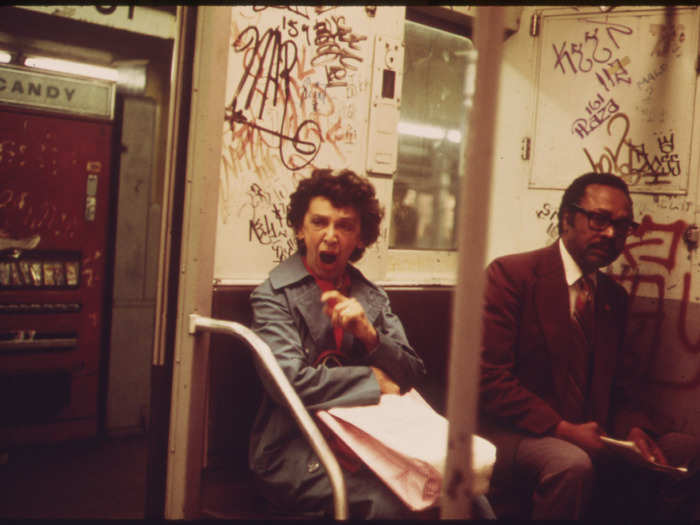
Popular Right Now
Popular Keywords
Advertisement